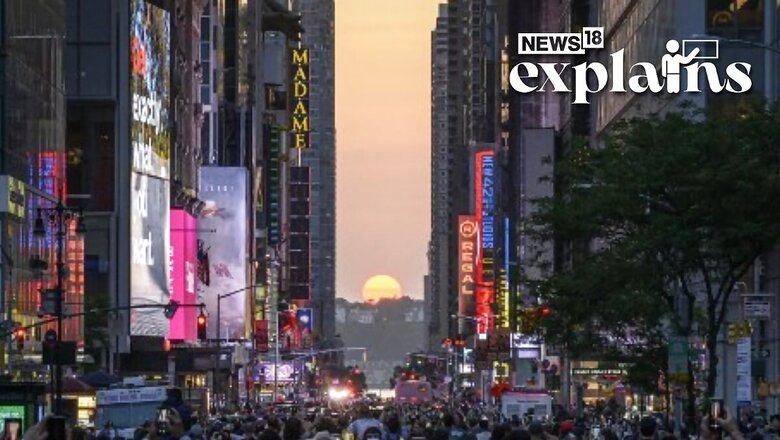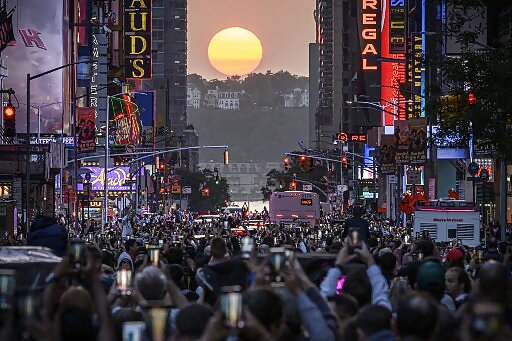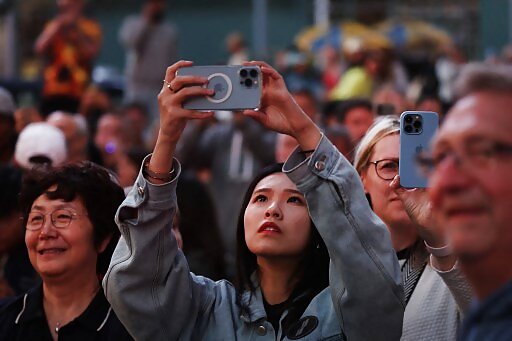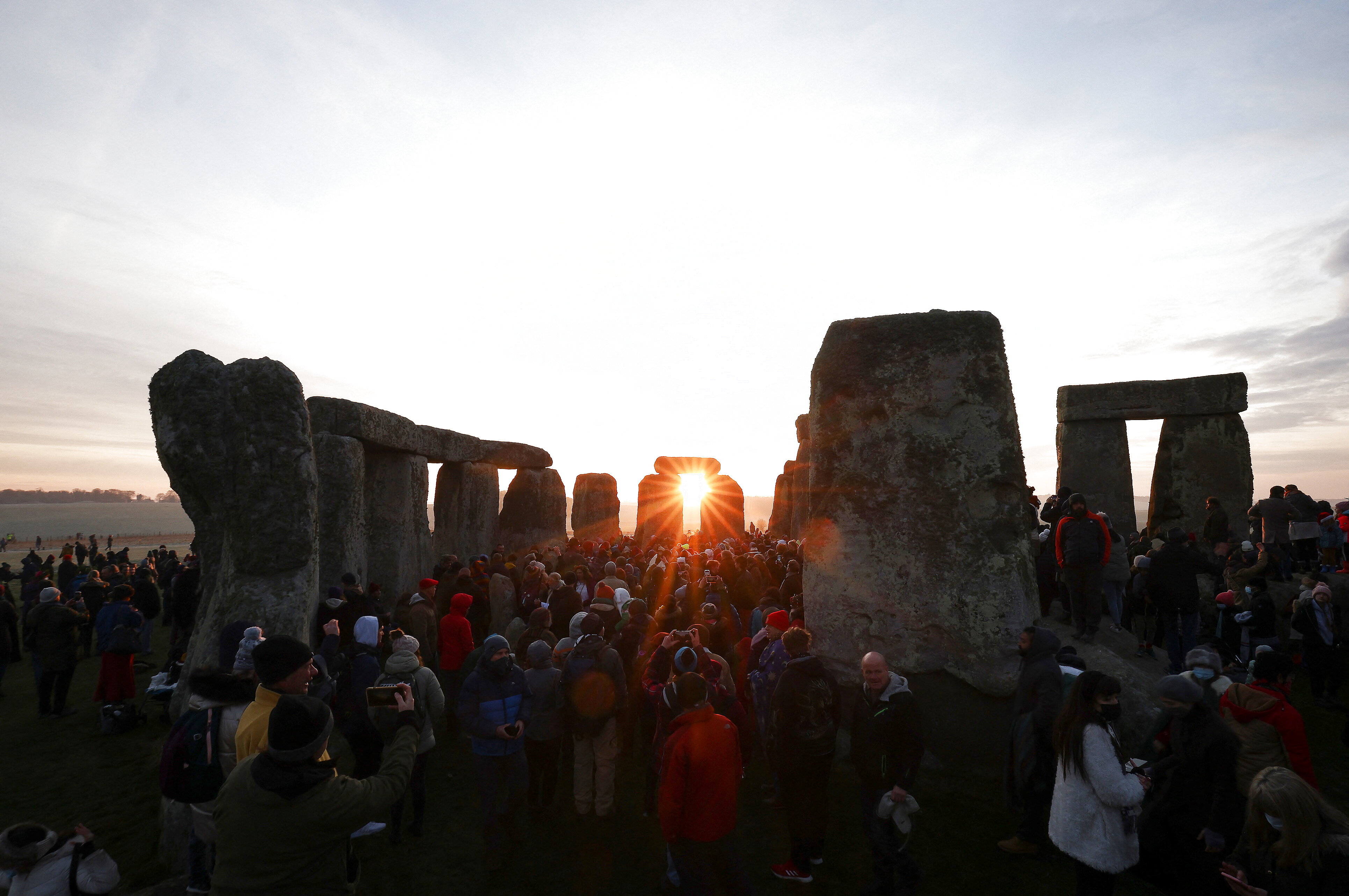
views
On Tuesday evening, a vibrant gathering of New Yorkers witnessed the awe-inspiring spectacle of Manhattanhenge. This biannual event showcased the mesmerizing alignment of the city’s renowned grid system with the setting sun, resulting in a picturesque scene that bathed the concrete jungle in a captivating warm glow.
Tonight’s half-sun Manhattanhenge on 42nd Street pic.twitter.com/VYJ7lzX7p1— Noel Y. Calingasan • NYC (@nyclovesnyc) May 30, 2023
As the sun descended on the horizon, its rays harmoniously intersected with the city’s streets, creating a breathtaking display of natural and urban harmony. This unique phenomenon has long captured the imagination of both tourists and locals, who flocked to witness the event and seize the opportunity to capture the perfect photograph.
The previous evening, Monday, marked the first night of Manhattanhenge, although only half of the setting sun was visible. Nevertheless, it provided a glimpse of the spectacle that awaited eager onlookers. The anticipation and excitement surrounding Manhattanhenge make it a highly anticipated event in the heart of New York City.
What is Manhattanhenge?
Manhattanhenge is a captivating phenomenon that occurs in Manhattan, New York City when the setting sun aligns perfectly with the city’s grid system and its towering skyscrapers. The city’s streets, which were meticulously designed in a grid layout, act as a remarkable frame for the setting sun, creating a stunning visual spectacle.

This phenomenon is not unique to Manhattan alone. Other cities with a similar layout of skyscrapers and long straight streets, such as Chicago, Montreal, and Toronto, also experience their own version of “henge” events. These events occur when the sunset aligns with the city’s architectural features, resulting in a captivating display of light and shadow, as per a report by BBC.
chicagohenge pic.twitter.com/lLcvcvrMhT— e (@Lil_Richards_) March 21, 2022
When Does it Take Place?
In Manhattan, specifically, the event takes place around the months of May and July, typically for two nights on each occasion. It occurs approximately three weeks before and three weeks after the summer solstice, marking the longest day of the year. Additionally, there is a sunrise version of this phenomenon that occurs during the winter months.

Who Coined the Term?
The term “Manhattanhenge” was coined by Neil deGrasse Tyson, a native New Yorker and renowned astrophysicist. As a teenager, Tyson visited the iconic Stonehenge monument and was inspired by the alignment of the solstice rays at its center. This experience sparked his imagination, leading him to draw a comparison between the sun’s perfect setting between the high-rises of Manhattan and the captivating alignment observed at Stonehenge, as per ABC News.
The Stonehenge and Solstice Connection
Stonehenge, a renowned prehistoric monument located in Wiltshire, England, holds a special significance during solstices, both in winter and summer. Constructed over a span of several centuries, from approximately 3,000 B.C. to 1,600 B.C., the purpose behind Stonehenge’s construction remains a subject of ongoing study and speculation, as per the Royal Astronomical Society.
During the northern summer solstice, a particularly notable event occurs at Stonehenge. If one stands inside the monument, facing north-east through the entrance and towards the Heel Stone, they will witness the magnificent sight of the sun rising directly above the Heel Stone. This alignment signifies the onset of summer, marking a significant moment in the annual celestial cycle.

This natural phenomenon attracts visitors from around the world, who gather at Stonehenge to witness this extraordinary event firsthand and to partake in the cultural and spiritual celebrations that often accompany these solstice observations. As the sun’s rays pierce through the ancient stones, it creates a powerful connection between the monument and the changing seasons, allowing visitors to experience the profound historical and astronomical legacy of Stonehenge.


















Comments
0 comment